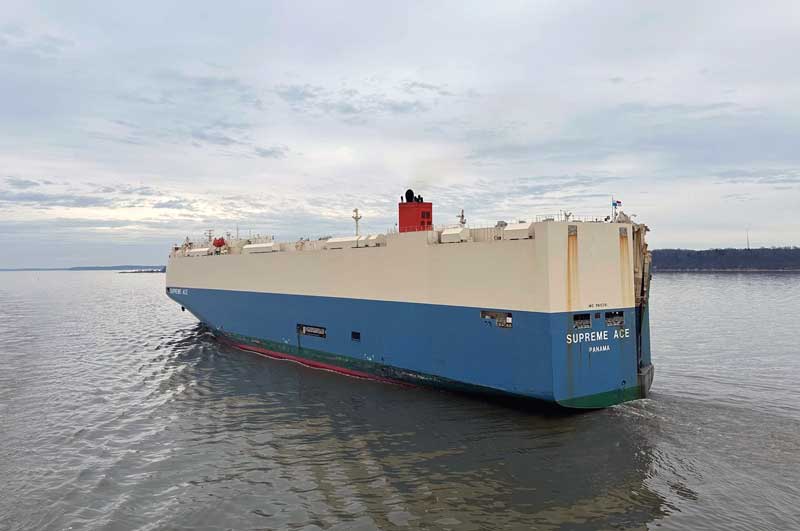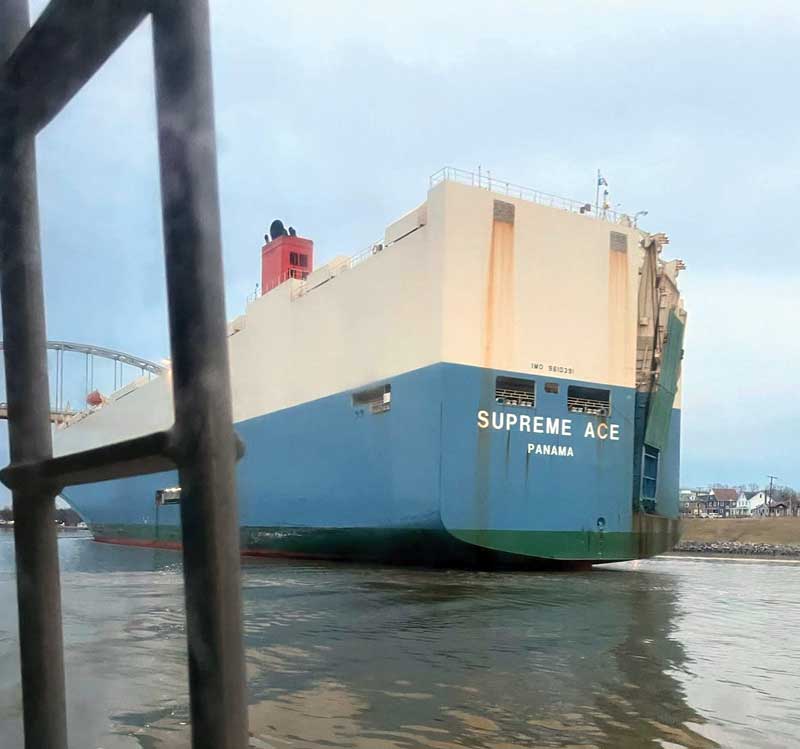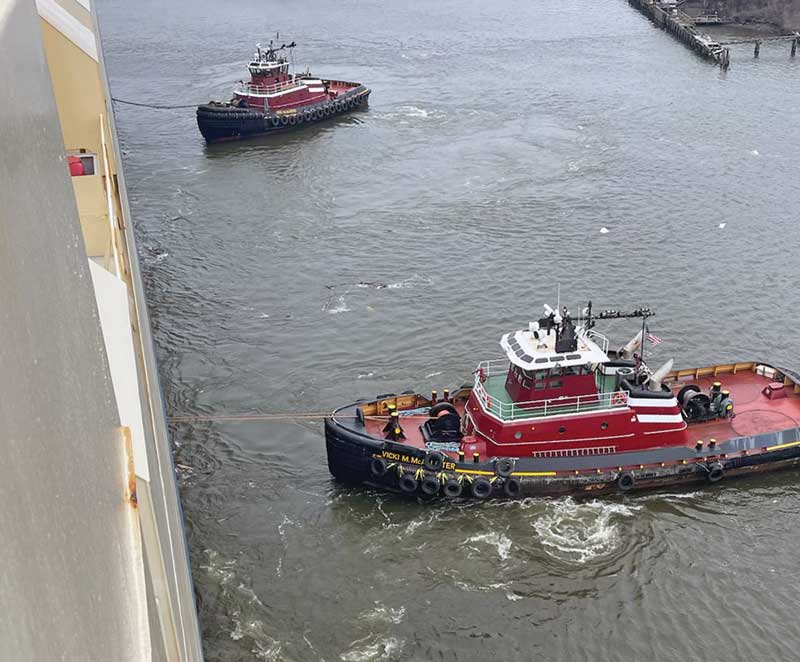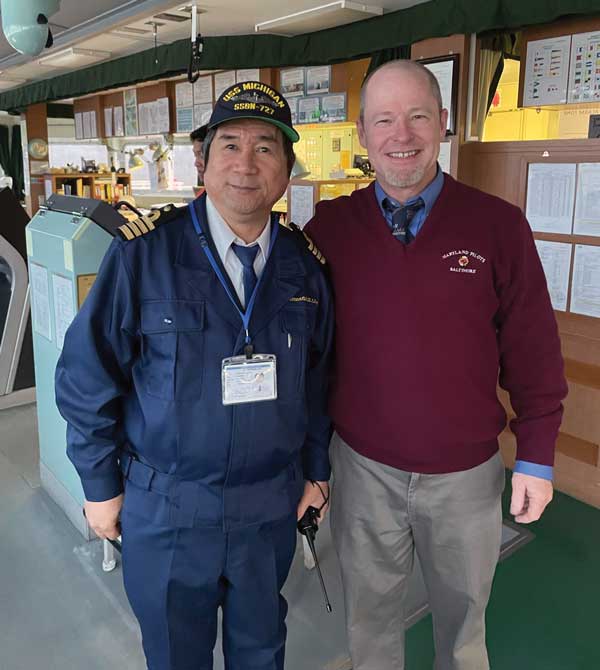On a Saturday morning, February 10, I got a text from my brother, Captain Chris Yearwood: “Want to take a ride on a ship from Sparrows Point to the Chesapeake and Delaware (C&D) Canal?” I was in the middle of a bathroom renovation project, but quickly said yes as this would be one of my brother’s last trips before retiring as a Maryland Bay Pilot.

We boarded the Supreme Ace, a 656-foot-long car carrier, at Sparrows Point just before noon. The ship was bound for Germany loaded with just over 1100 vehicles, well short of its 6800-vehicle capacity. After greeting the captain on the bridge, obtaining the ship particulars, and speaking with the two tugboat captains, my brother asked the captain to have the crew start letting go of lines. We were not the only ones on the bridge of the ship; there was also a helmsman to steer and an officer to operate the engine order telegraph and take care of other bridge duties. Although the ship was flagged Panamanian, the entire crew were Filipino, and the owner of the ship was a Japanese company.
We undocked shortly after 1 p.m. with the help of two tugs and the ship’s bow-thruster, which were also used to turn the massive ship around to head out of the channel. Undocking and docking these large vessels demand great expertise from the pilots who communicate closely with the ship’s captain, helmsman, and tugboats. Once in the channel and underway, my brother gave the order for the tugs to depart. It was a clear day, and we had a light breeze, which made the transit uneventful.

As a former U.S. Merchant Mariner, I’ve always had a great amount of respect for pilots, whose primary job is to navigate vessels safely through waters, protecting the environment, people, the ship, and its cargo. Piloting is demanding—long hours, it’s dangerous (getting on and off the ship), and requires great skill and experience. It’s almost an art form.
The pilot’s commands to the ship’s crew on the bridge were brief and consisted of rudder orders (e.g., starboard 20), course heading (e.g., one four zero) and engine speed. The orders are always repeated by the crew followed by a “very well” from my brother. He would also communicate with other nearby vessels to arrange safe passage using the VHF radio. We had to slow down as we passed a couple of dredges along the way and as we entered the C&D Canal. The wake from this ship can cause damage to other vessels and shorelines, so it is important that the vessel slows down in these situations.

Just before the canal bridge on the western side of the C&D Canal, the pilot boat came alongside the ship and a Delaware pilot boarded to navigate the ship the rest of the way through the C&D canal and out the Delaware Bay. My brother had a brief turnover discussion with the Delaware pilot, and then we departed the ship, taking the elevator down to the main deck, where we exited a side port to a Jacob’s ladder hanging off the side of the ship. We climbed down the ladder and hopped on the pilot boat which transported us to Schaefer’s Canal House where our ride was waiting to take us back to Baltimore.
I’m very proud of my brother and the stellar career he enjoyed while protecting our beautiful Chesapeake Bay and ensuring the safe movement of commerce. Captain Yearwood will continue to spend time on the water in the Annapolis area, but mostly on recreational vessels as he pursues his other on-the-water passions (sailing, fishing, waterskiing, and anything else that gets him on the water). Fair winds and following seas brother!

About the Author: Captain Adam Yearwood holds a USCG 1600-ton Master’s license and a second mate unlimited tonnage license. In addition to providing private yacht instruction and charter services, he is a member of and an instructor for the USCG Auxiliary, Maryland safe boating course, and American Sailing Association.